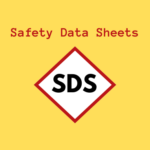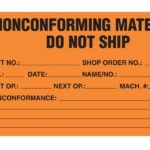A Step-by-Step Guide to Successfully Implementing QMS Software

Introduction:
Implementing a Quality Management System (QMS) is a significant undertaking for any organization. It requires careful planning, diligent execution, and the right tools to ensure a seamless transition. In this blog post, we will provide you with a step-by-step guide to successfully implement QMS software. By following these essential steps, you can streamline your quality management processes, enhance compliance, and drive overall organizational excellence.
Step 1: Assess Your Organization’s Needs
Before diving into the implementation process, it’s crucial to assess your organization’s unique requirements. Identify the pain points, inefficiencies, and compliance gaps in your existing quality management processes. Determine the specific goals and objectives you want to achieve with the QMS software. This assessment will serve as the foundation for a successful implementation.
Step 2: Plan and Define Scope
Develop a comprehensive implementation plan that outlines the scope, timeline, and resources required for the QMS software deployment. Define the key stakeholders involved, assign responsibilities, and establish communication channels. Set realistic milestones and deliverables to track progress effectively throughout the implementation journey.
Step 3: Select the Right QMS Software Vendor
Choosing the right QMS software vendor is critical to the success of your implementation. Conduct thorough research, evaluate different vendors, and compare their offerings based on your organization’s requirements. Look for a vendor with a proven track record, robust features, user-friendly interface, scalability, and excellent customer support. Request demos and engage in conversations to ensure the software aligns with your needs.
Step 4: Prepare Your Data
Gather and organize your existing quality management data, including documents, procedures, templates, and relevant information. Cleanse and standardize the data to ensure consistency and accuracy. Determine the necessary data migration strategy and work closely with your vendor to facilitate a smooth transfer of information to the new QMS software.
Step 5: Customize and Configure the Software
Tailor the QMS software to match your organization’s specific processes and requirements. Work closely with your vendor to configure workflows, document templates, approval processes, user roles, and access permissions. Ensure that the software aligns with your existing quality management framework, compliance standards, and industry-specific regulations.
Step 6: Train Your Users
Proper training is essential to ensure the successful adoption of the QMS software across your organization. Develop a comprehensive training program that covers all aspects of the software, including navigation, document control, risk management, auditing, and reporting functionalities. Conduct hands-on workshops, and webinars, and provide user manuals to empower your employees to use the system effectively.
Step 7: Pilot Testing and Refinement
Before rolling out the QMS software organization-wide, conduct a pilot test with a small group of users. Evaluate the software’s performance, usability, and identify any potential issues or areas for improvement. Collect feedback from the pilot users and refine the system accordingly. This step will help you iron out any glitches and ensure a smooth implementation for the entire organization.
Step 8: Deployment and Communication
Once you have successfully completed the pilot testing phase, it’s time to deploy the QMS software across your organization. Develop a robust communication plan to inform employees about the new system, its benefits, and how it will impact their daily work. Provide ongoing support and assistance to address any concerns or questions that may arise during the transition period.
Step 9: Monitor, Evaluate, and Improve
After the QMS software implementation, establish a monitoring and evaluation process to gauge its effectiveness. Continuously track key performance indicators (KPIs), measure user satisfaction, and collect feedback from employees. Identify areas for improvement and implement necessary adjustments to optimize the system’s performance and maximize its benefits.
Conclusion:
Implementing QMS software is a transformative journey that can significantly enhance your organization’s quality management processes. With Trackmedium, a reliable and innovative QMS software vendor, you can navigate the implementation process with confidence and achieve a successful outcome. Trackmedium QMS offers a comprehensive suite of features designed to streamline your quality management, improve compliance, and drive overall organizational excellence.
By partnering with Trackmedium, you gain access to a user-friendly interface, robust customization options, and excellent customer support. Their software aligns with your organization’s specific processes and requirements, ensuring a seamless integration with your existing quality management framework and industry-specific regulations.
Throughout the implementation process, Trackmedium provides comprehensive training, hands-on workshops, and ongoing support to empower your employees to leverage the full potential of the QMS software. With Trackmedium QMS, you can monitor key performance indicators, measure user satisfaction, and continuously improve your quality management processes.
Embarking on the QMS software implementation journey with Trackmedium ensures that you have a trusted partner by your side, committed to your success. Elevate your quality management practices, streamline your operations, and drive your organization towards excellence with Trackmedium QMS.



















